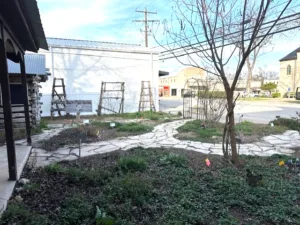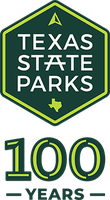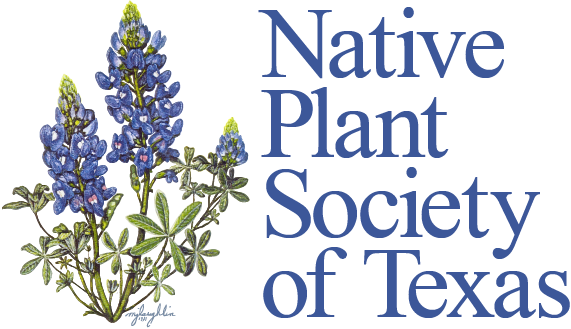Prairie Rose Chapter of the Native Plant Society of Texas Demonstration Garden
Our Garden is located in Glen Rose Texas. Across the street from the Courthouse Square right next to the Glen Rose Museum . It is open to the Public for viewing. The native plants are labeled for your information
. 
NICE! Native Plant Partners
The NICE Native Plant Partners program is a collaboration between the Native Plant Society of Texas and local nurseries around the state to offer natives that are right for the local environment. Texas is a large, diverse state and plants that work for one region may not always be the best choice in a different region. Native Plant Partners committees run by our local chapters create a list of Plant of the Month plants (in some areas a Plant of the Season) in cooperation with participating local nurseries and wholesalers in order to assure availability. The Native Plant Society chapter then helps promote the Plant of the Month through its website and newspaper articles, signs at the point of sale and other means. Often an information sheet on the plant is available at the nursery.
Native Landscape Certification Program
Our Native Landscape Certification Program (NLCP) is a series of day-long classes highlighting best practices for native plant landscaping, including wildlife habitat gardening.
Each class consists of an indoor training session and a plant identification session. We show you plants native to the local ecoregion and illustrate their use in the landscape.
In each level you are presented with 45 native Texas plants recommended for your area, and 5 non-native plants to avoid.
Goals of the NLCP classes are to (a) educate NPSOT members and the general public about the value of natives, (b) how to use native plants in home, public and commercial landscapes and habitat restorations, and to (c) provide native landscape education, CEUs, and credentials to landscape professionals, developers, and nature-oriented groups.
- Level 1: Introduction to Native Landscapes – Class & Plant Walk
- Level 2: Design and Development with Native Plants – Class & Plant Walk
- Level 3: Installing and Maintaining Native Landscapes – Class & Plant Walk
- Level 4: Stewardship of Native Plant Communities (under development) – Class & Plant Walk Visit Native Landscape Certification Program
Featherfest
Join us in our Booth at Featherfest in the Acton Nature Center. Our activity for the child in all our visitors is making seed balls
!
Native Plant Sales

Spring Native Plant Sale in the demonstration Garden behind the Glen Rose Courthouse Square.
Demonstration Garden Work Days
The Prairie Rose Demonstration Garden is a great place to volunteer your time whether you are a plant expert or novice. There is so much to learn and so many people willing to share their knowledge.
Dinosaur Valley
Come visit the Prairie Rose Booth as we celebrate everything migratory and with wings at Dinosaur Valley Park!
 Join us all day long for activities focused around everything winged and migratory!
Join us all day long for activities focused around everything winged and migratory!
We will have ranger programs, self-guided activities, arts and crafts, hikes and nature walks, and much more!
Note: This event lasts all day during the scheduled hours. Feel free to stop by anytime for the activities!
Meet: Dinosaur Models to begin
Bring: Water, sunscreen, and an eagerness to have fun!
This is one of many 100-year celebration events happening in Texas state parks this year. Entry to a park is free on the day it hosts an official 100-Year celebration event (applies to day passes only). Guarantee entry by reserving your free day pass up to one month before this special event.
Officers
- Marcia Miller, President
- Bonnie Colgin, Treasurer
- Jeri Norris, Secretary
- Open Position, Event Coordinator
